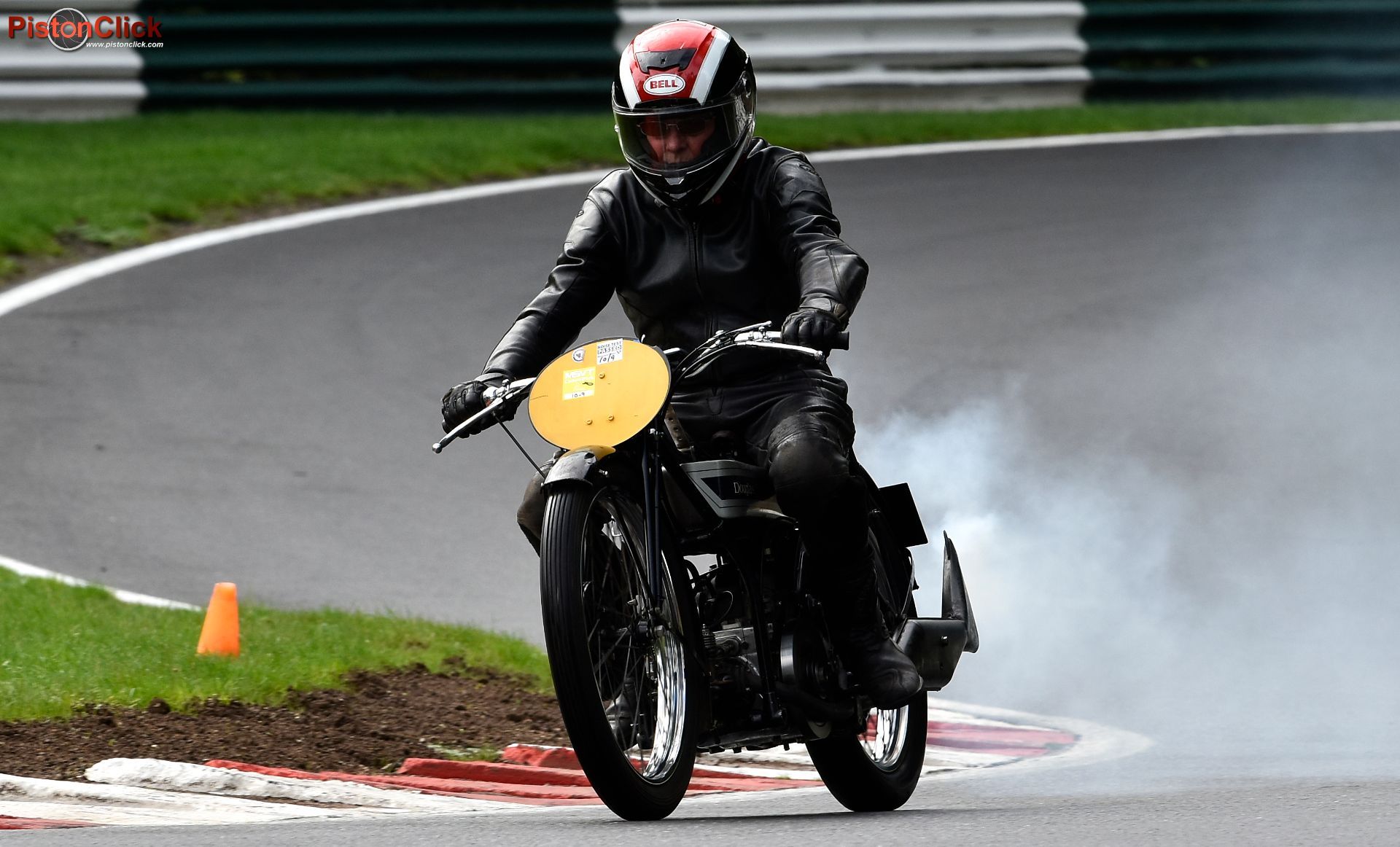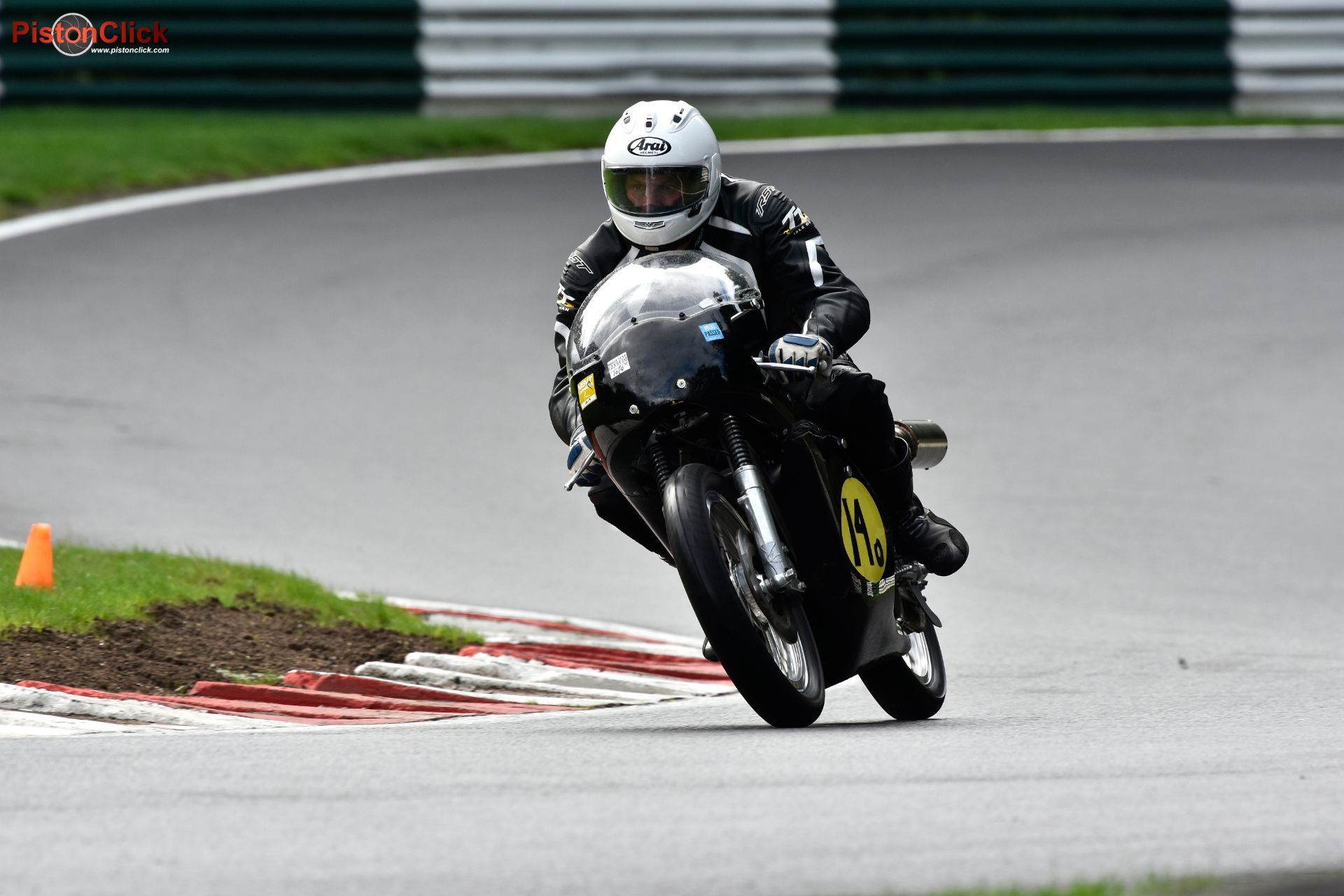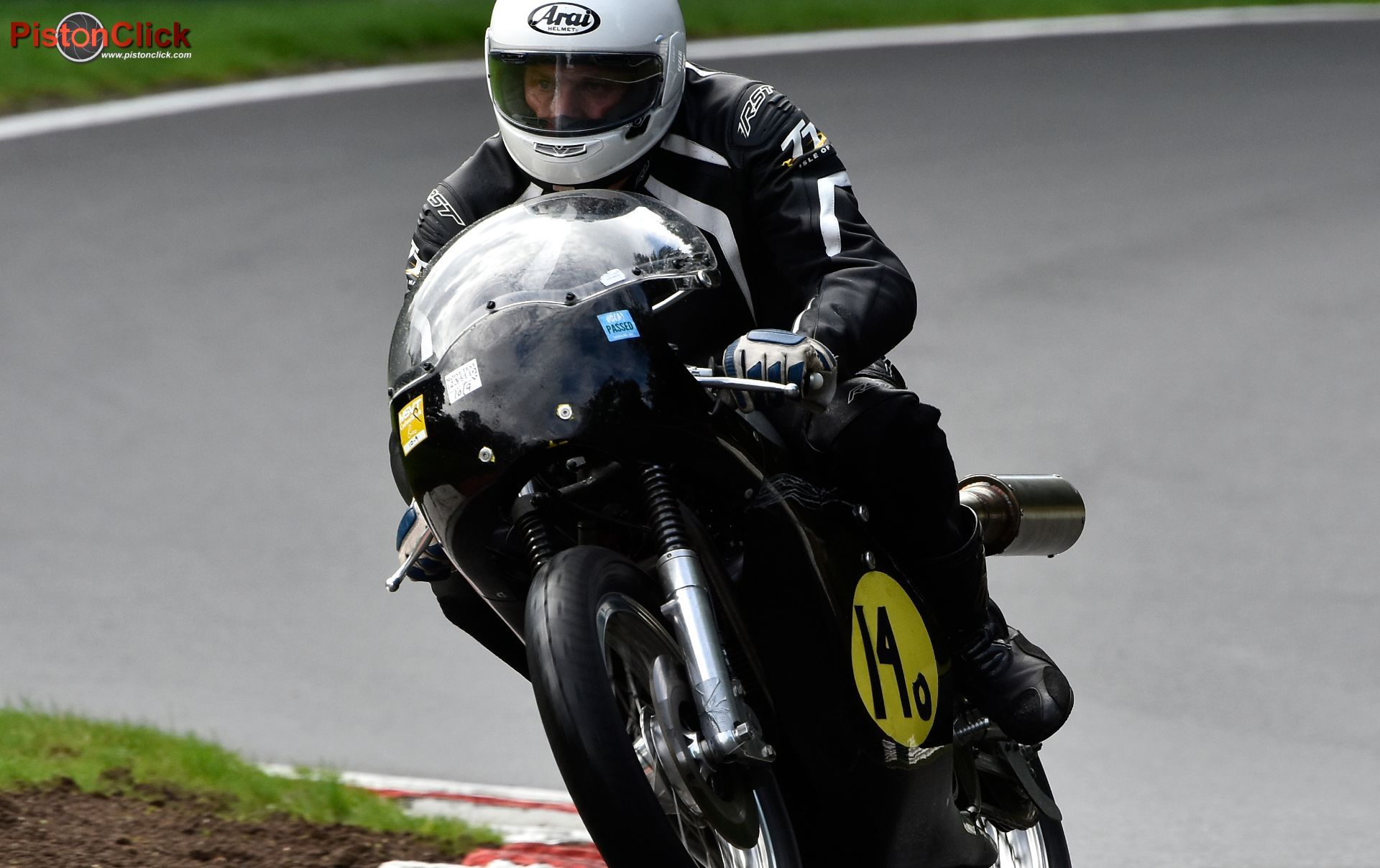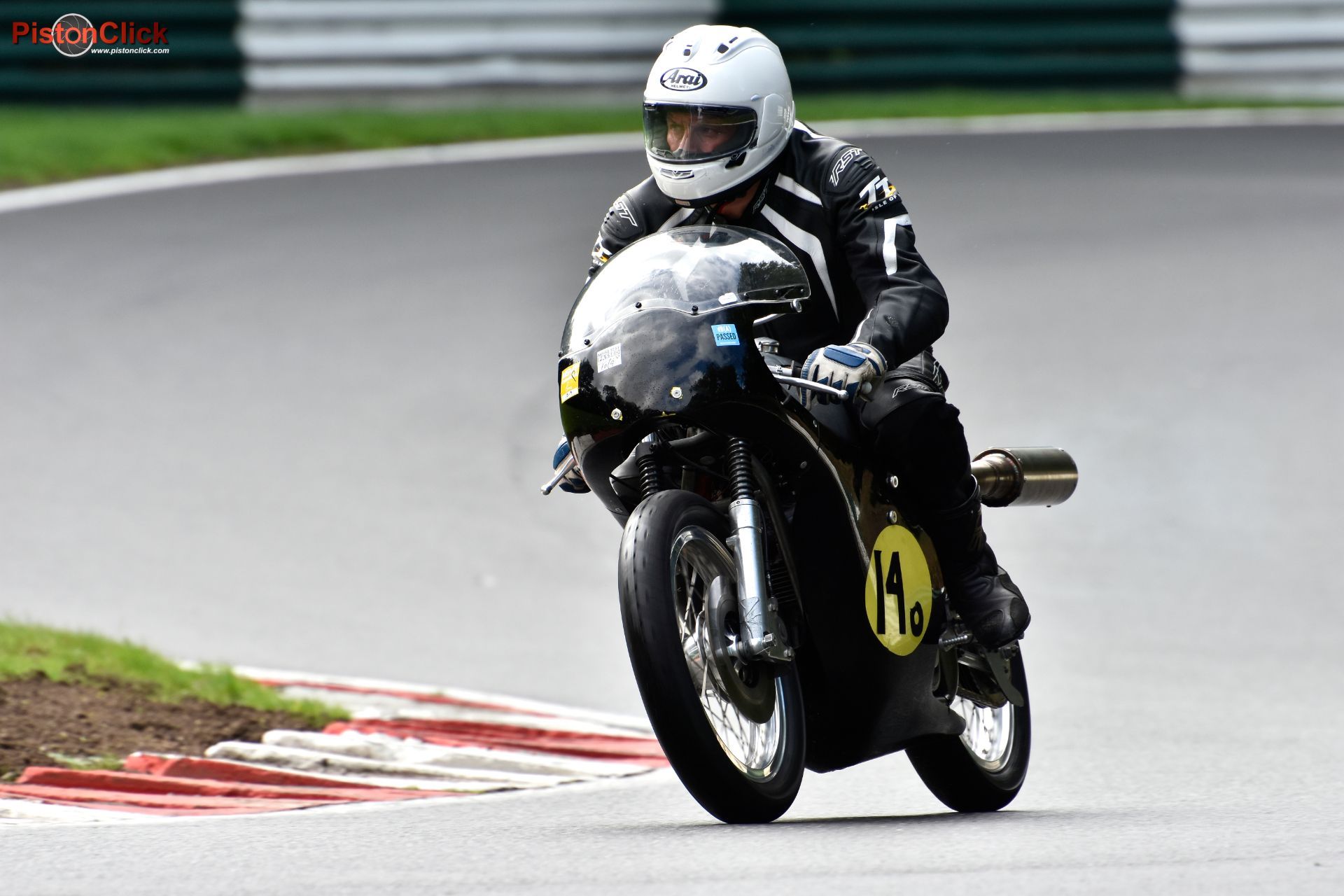
Getting extra reach with your motorsport lenses - Crop Sensor Cameras and Teleconverters.
25 February 2023
One of the requirements of taking a good motorsport photograph is being able to record the subject is some detail, and that means that you have to be close enough to the action to do that. If you are like me, a spectator photographer stuck behind the safety fencing and tyre walls, you will need at some point to invest in a long focal length lens with enough reach to capture that action.
There are loads of great lenses out there that will give you the reach but they always leave you wanting more. There is also a problem with long focal length lenses, in that they tend to be massive and heavy. Sometimes you just have to suck it up and hump loads of glass around, but if you want to get that shot that is some distance away there are alternatives.

Nikon D7200 Nikon 200-400mm f4 G VR II AF-S ED with a AF-S TC-14E II @ f7.1 1/1000sec (Crop 1.5 x 393mm focal length x 1.4 convertor = 825mm) through safety wire at Donington Park.
The tracks like Donington and Silverstone are prime examples where you need that extra reach and I generally take just one big heavy lens, but it isn’t enough for some of the locations I like to shoot from. One way to give you more reach is to use a crop body camera instead of a full fame camera. Crop bodies are generally lighter and smaller than full frame cameras which is also helpful in keeping the weight down, but what's the difference between the two?
Very basically it's to do with the sensor size. Full frame sensors are larger giving you better dynamic range, (better for high contrast) more depth of field, a wider field of view and better low light performance. A crop sensor has a smaller sensor in the camera but has the advantage of a perceived extra magnification.
You will hear people call a crop sensor a multiplier with a narrower field of view. Part of that statement is true - the narrower field of view part. So how does the image seem magnified when you view it on your computer?
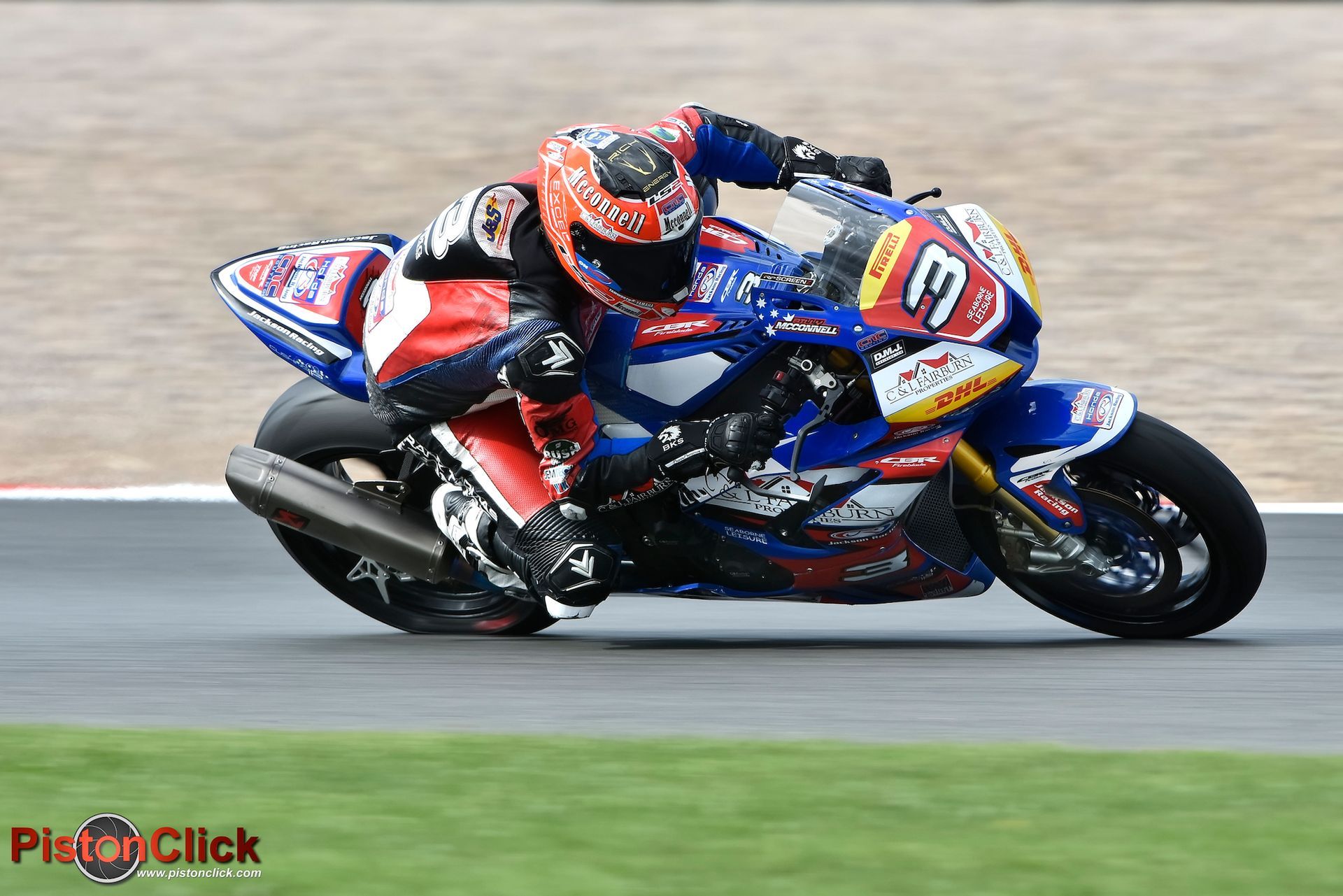
Nikon D7200 Nikon 200-400mm f4 G VR II AF-S ED with a AF-S TC-14E II @ f7.1 1/400sec (Crop 1.5 x 329mm focal length x 1.4 convertor = 691mm) no safety wire at Donington Park
The lens will always be the same focal length what ever camera you put it on, but the image area "seen" by the sensor will be different. The image seen through a lens is round (I have never seen rectangular glass in a lens), the sensor is rectangular, so reproduces a portion of that round image. A crop sensor is smaller so sees a smaller portion of the original image hence the crop statement, therefore it looks magnified when you view it, its not its cropped.
Different camera manufactures have different crop factors. Canon has a 1.6x crop sensor, Nikon, Sony, Sigma and Pentax have 1.5x and Panasonic and Olympus are 2x. One disadvantage of the crop is that it gives you a tighter field of view, which for me isn't a disadvantage in motorsports, although if I were shooting landscapes it would be.

Nikon D7200 Nikon 200-400mm f4 G VR II AF-S ED @ f7.1 1/400sec (Crop 1.5 x 400mm focal length no convertor = 600mm 30% crop post processing)
The main disadvantage of a crop sensor is the image quality (everyone keeps telling me) is not as good as a full frame as the sensors are smaller. In my experience it's close in the real world. Looking at the Nikon range of crop DSLR, the 7200, 7500 and the pro body D500 are very usable camera systems for sports photography. Yes there is a slight image quality trade off, but having the ability to add 1.5x extra reach to your lens and less weight makes up for the slight loss of quality for me.

Nikon D7200 AF-S NIKKOR 70-200mm f/2.8E FL ED VR with a AF-S Teleconverter TC-20E III @ f5.6 1/1000sec(Crop 1.5 x 200mm focal length x 2.0 convertor = 600mm)
You can of course crop your full frame camera's image in post production if you have enough pixels, and the latest cameras from the Nikon D850 to the mirrorless Z7 II at 45.7MP will let you do that. They also have crop modes built in which will allow you to crop in-camera, replicating a crop sensor camera. I don’t own a 45MP camera so the next two examples are from my Nikon D3X a 25MP full frame camera with the Nikon AF-S TC-14E II fitted for both shots, the second utilising the in-camera crop.
However, a full frame camera is a lot more expensive, about a £1000 more. The D850 £2,600, Z7 II at £2,869 as of January 2023. A Nikon D500 will set you back £1500, if you can find one as they are discontinued, and a D7500 will set you back about £1000. If I didn’t have a bag full of quality Nikon lenses I would seriously consider the Canon EOS 90D. At 32.5MP you get the best of both worlds, a 1.6 crop and loads of pixels and it's advertised at £1300.

Nikon D3X (Full Frame) Nikon 200-400mm f4 G VR II AF-S ED with a AF-S TC-14E II @ f5.6 1/640sec 500mm focal length

Nikon D3X (Full Frame) Nikon 200-400mm f4 G VR II AF-S ED with a AF-S TC-14E II @ f5.6 1/400sec 675mm focal length using in camera crop
If using a crop sensor camera is still not giving you enough reach there is another way to get closer to the action, and that is by using a teleconverter. This is what this report is going to be about - Crop Sensors and Teleconverters. This combination for the spectator photographer works well when you are some distance away capturing the action from behind the tyre wall or at the back of a crowd.

Nikon D7200 AF-S NIKKOR 70-200mm f/2.8E FL ED VR with a AF-S TC-14E II @ f4.5 1/500sec (Crop 1.5 x 200mm focal length x 1.4 convertor = 420mm)
I have in my lens collection a Nikon AF-S TC-14E II, Nikon AF-S TC-17E II and a Nikon AF-S TC-14E III Teleconverters and I will start this report with the caveat that you might get mixed results by using a Teleconverter with your lens and camera body combination. Teleconverters are made to be matched with the same manufacturer's prime lens, mainly the pro end with an aperture of f2.8. This is because you will lose light hitting your sensor when you use a Teleconverter, approximate light loss values are shown below.
A 1.4x converter will lose 1 stop of light; an f/2.8 lens becomes an f/4 combination
A 1.7x converter will lose 1.5 stops of light; an f/2.8 lens becomes an f/4.7 combination
A 2x converter will lose 2 stops of light; an f/2.8 lens becomes an f/5.6 combination
Not to much of a problem with those expensive primes, but if your lens has a maximum aperture of f5.6 you are going to lose a lot of light. This can be corrected by increasing the sensitivity of the sensor by increasing the ISO, however it can induce more grain, thus degrading your image.
The main problem with a smaller aperture and less light is that there is a loss of focusing ability. Most modern cameras will still work well at f8 when focusing, but you will notice some degradation locking onto your fast moving motorsport target as less focusing sensors are active at f8 and below.

Nikon D7200 Nikon 200-400mm f4 G VR II AF-S ED with a AF-S TC-14E II @ f8 1/800sec (Crop 1.5 x 400mm focal length x 1.4 convertor = 840mm)
I use my Teleconverters with a AF-S NIKKOR 70-200mm f/2.8E FL ED and a Nikon 200-400mm f4 G VR II AF-S ED on a rather old Nikon D7200 which I will upgrade when it dies on me, but for the time being I am very happy with the results it gives.
These lenses are zooms not primes but they work well with a Teleconverter, the AF-S NIKKOR 70-200mm f/2.8E FL ED is better than the Nikon 200-400mm f4 G VR II AF-S ED but with both it's very difficult to notice any difference when using the AF-S TC-1.4E.
Image quality does drop off with the 1.7 and 2.0 but both are still very usable. Below are some examples from a Nikon D7200 crop body with a AF-S NIKKOR 70-200mm f/2.8E FL ED with a corresponding 100% crop so you can see the detail.
Remember, these images have been reduced in size from 6000 pixels longest size to 1920 for hosting on this website. The map shows you where I was shooting from and the distance, 47m about 154 feet. This is Cadwell Park Hall bends complex.

Image from Google Maps
So if you fancy getting a Teleconverter what's on offer? I will only look at the Nikon ones as that’s what's in my bag, but other makes are available. These small pieces of glass are not cheap. There are other manufacturers who make cheaper teleconverters that will fit your lens, but in my experience they are not as good unless matched with that manufacturer's lens.
I used to shoot with Sigma primes with matched Teleconverters a long time ago and the Teleconverters never played well with Nikon lenses. That's if you could fit them, as some of my lenses were not compatible with the Sigma Teleconverters even though they were all Nikon F mounts!
AF-S Teleconverter TC-20E III £499 Nikon AF-S TC-14E III Teleconverter £529

As you can see the Nikon AF-S TC-17E II Teleconverter cannot be purchased new but you can find a used one for £140 - £160. Why so cheap? Well, the image quality is not as good as the 1.4 II/III or the 2.0 III (if you are looking at a 2.0 only get the III) but still very usable on the right lens. If I was in the market for a Teleconverter right now I would only be looking at used . They are one of those bits of kit that some photographers buy and then don’t use a great deal, so pristine examples of the TC-14E II can be found for £250 - £300 and less.
So to sum up, I always have a set of teleconverters in my bag. They are light to carry and give good results and great reach with the right glass. With some events I need a lightweight kit - a 70-200mm on a crop camera and a 1.4 converter is a great lightweight combination, giving me a very usable focal range of 70 to 420mm. The most important takeaway from this report and main aspect of using teleconverters is to match it with the right glass and you will have a lightweight setup and the results will be impressive.

Nikon D7200 Nikon 200-400mm f4 G VR II AF-S ED with a AF-S TC-14E II @ f7.1 1/1000sec (Crop 1.5 x 350mm focal length x 1.4 convertor = 735mm) through safety wire.
| Compatibility Lens Name | TC-14E II | TC-14E III | TC-17E II | TC-20E II | TC-20E III |
|---|---|---|---|---|---|
| Prime Lenses | Compatibility/Limitations | ||||
| AF-S VR Micro-NIKKOR 105mm f/2.8G IF-ED | AF Not Possible | AF Not Possible | AF Not Possible | AF Not Possible | AF Not Possible |
| AF-S VR NIKKOR 200mm f/2G IF-ED | |||||
| AF-S NIKKOR 300mm f/2.8G ED VR II | |||||
| AF-S VR NIKKOR 300mm f/2.8G IF-ED | |||||
| AF-I NIKKOR 300mm f/2.8D IF-ED | |||||
| AF-S NIKKOR 300mm f/4D IF-ED | AF Limitations† | AF Limitations† | AF Limitations† | ||
| AF-S NIKKOR 300mm f/4E PF ED VR | AF Limitations† | AF Limitations† | AF Limitations† | ||
| AF-S NIKKOR 400mm f/2.8G ED VR | |||||
| AF-S NIKKOR 400mm f/2.8D IF-ED II | |||||
| AF-S NIKKOR 400mm f/2.8D IF-ED | |||||
| AF-I NIKKOR 400mm f/2.8D IF-ED | |||||
| AF-S NIKKOR 400mm f/2.8E FL ED VR | |||||
| AF-S NIKKOR 500mm f/4G ED VR | AF Limitations† | AF Limitations† | AF Limitations† | ||
| AF-S NIKKOR 500mm f/4D IF-ED II | AF Limitations† | AF Limitations† | AF Limitations† | ||
| AF-S NIKKOR 500mm f/4D IF-ED | AF Limitations† | AF Limitations† | AF Limitations† | ||
| AF-S NIKKOR 500mm f/4E FL ED VR | AF Limitations† | AF Limitations† | AF Limitations† | ||
| AF-I NIKKOR 500mm f/4D IF-ED | AF Limitations† | AF Limitations† | AF Limitations† | ||
| AF-S NIKKOR 500mm f/5.6E PF ED VR | AF Limitations† | AF Limitations† | AF Not Possible | AF Not Possible | AF Not Possible |
| AF-S NIKKOR 600mm f/4G ED VR | AF Limitations† | AF Limitations† | AF Limitations† | ||
| AF-S NIKKOR 600mm f/4D IF-ED II | AF Limitations† | AF Limitations† | AF Limitations† | ||
| AF-S NIKKOR 600mm f/4D IF-ED | AF Limitations† | AF Limitations† | AF Limitations† | ||
| AF-I NIKKOR 600mm f/4D IF-ED | AF Limitations† | AF Limitations† | AF Limitations† | ||
| AF-S NIKKOR 600mm f/4E FL ED VR | AF Limitations† | AF Limitations† | AF Limitations† | ||
| AF-S NIKKOR 800mm f/5.6E FL ED VR | AF Limitations† | AF Limitations† | AF Not Possible | AF Not Possible | AF Not Possible |
| Zoom Lenses | Compatibility/Limitations | ||||
| AF-S NIKKOR 70-200mm f/2.8G ED VR II | |||||
| AF-S VR Zoom-NIKKOR 70-200mm f/2.8G IF-ED | |||||
| AF-S NIKKOR 70-200mm f/2.8E FL ED VR |
You can share this report with your friends on Social Media using these links.


